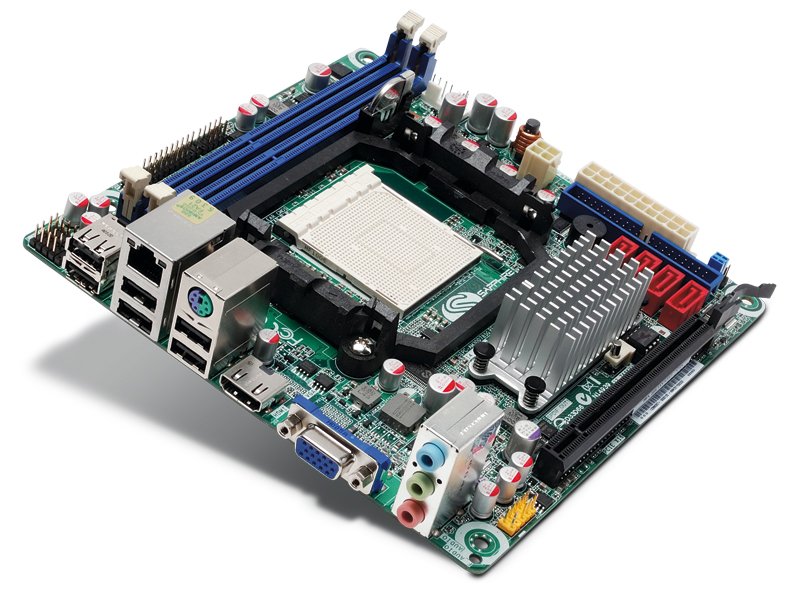TechRadar Verdict
A board that straddles the commercial and consumer markets and probably satisfies neither.
Pros
- +
Good stock clocked performance
- +
Supports all AM3 CPUs, in theory
Cons
- -
BIOS update issues
- -
Pricey given the limited feature set
Why you can trust TechRadar
Workhorse motherboards aimed at embedded and commercial applications tend not to make fine fillies in the context of home PCs. With that in mind, what chance has the Sapphire IPC-AM3DD785G in the Mini-ITX motherboard stakes?
Despite being categorised as an industrial motherboard – the marketing bumpf speaks of information kiosks and digital signage, not games and movies – the Sapphire IPC-AM3DD785G does seem to tick all the boxes required for a compact home cinema system.
The AMD 785G chipset is certainly multimedia friendly and theoretically works with all the latest AMD CPUs including the top six-core Thuban chips. Sapphire has even found space for a pukka PCI-e x16 port on this vanishingly small Mini-ITX board.
A high performance AMD-based alternative to Mini-ITX boards such as Zotac's H55-ITX WiFi is therefore not out of the question. But the real story of the Sapphire IPC-AM3DD785G's suitability for home systems only begins when you fire it up.
Usability is where industrial PCs tend to fall flat. It's therefore not exactly shocking to find the Sapphire IPCAM3DD785G doesn't always make life easy for the end user. A good example of this is the BIOS updating routine.

DOS throwback
Nearly all consumer class motherboards now come with idiot-proof Windows applications for updating the BIOS. But not this little Mini-ITX board. Courtesy of some moderately baffling and garbled instructions, you must create a bootable USB stick and then resurrect your DOS prompt skills.
Our DOS talents obviously weren't good enough and the result was a thoroughly bricked board. Luckily, we had a spare to hand and discretion being the better part of valour, we left the BIOS well alone.
Unfortunately, however, without a BIOS update the IPC-AM3DD785G won't play ball with six-core Thuban chips. Another symptom of this board's overtly commercial remit is the utterly threadbare BIOS menu.
The demand for overclockable kiosks being, we imagine, pretty minimal Sapphire has omitted controls for the CPU multiplier, memory dividers, voltages and more. Only the main bus frequency can be tweaked and even then only in steps of 6-8MHz up to a maximum of 250MHz. As it happens, even that is optimistic as the board flakes out at just 230MHz.
Having said all that, performance with a Phenom II X4 965 Black Edition is actually quite impressive. That includes gaming performance with a discrete GPU where it beats AMD-based microATX boards, such as Asus's M4A785TD-M EVO and the Gigabyte 880GMA-UD2H.
Technology and cars. Increasingly the twain shall meet. Which is handy, because Jeremy (Twitter) is addicted to both. Long-time tech journalist, former editor of iCar magazine and incumbent car guru for T3 magazine, Jeremy reckons in-car technology is about to go thermonuclear. No, not exploding cars. That would be silly. And dangerous. But rather an explosive period of unprecedented innovation. Enjoy the ride.
